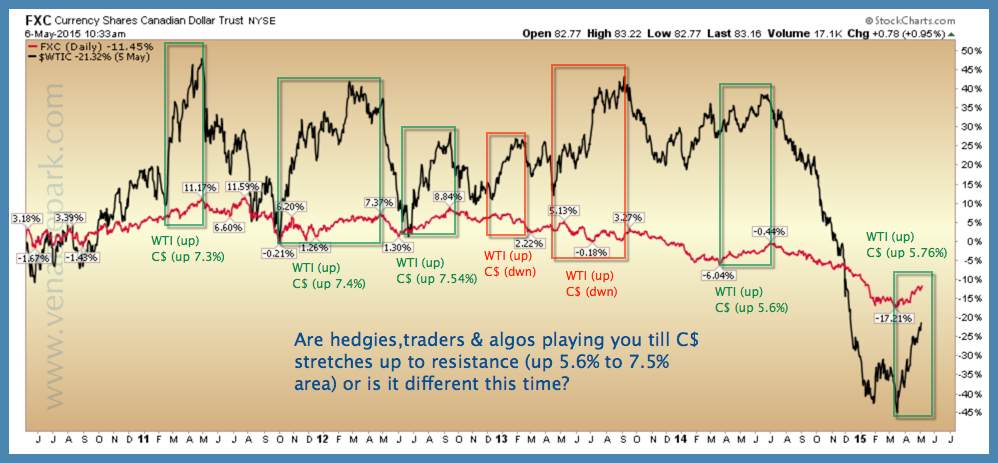In Greek mythology King Sisyphus was punished for chronic deceitfulness by being compelled to roll a massive boulder up a hill, only to watch it roll back down on him repeatedly.
After a torrid ascent since last summer, the US dollar weakened over the past 2 months and the Canadian dollar and oil have rebounded in Pavlovian response. But there are reasons to suspect that these trends may not be durable.
For one thing, the US dollar, while susceptible to interim profit-taking, is still in high demand by foreigners who need about $9 trillion to pay back the U$ loans they borrowed during the QE-phoria in financial markets 2010-2014.
For another, the supply/demand forces for oil look bearish in the medium and even longer term. Notwithstanding rig closures to date, output is still rising in 2015 as demand weakens. OPEC and the International Energy Agency data suggest the world is pumping 1.5 million barrels of excess crude per day at the moment. With inventory levels already at the highest levels ever, storage is becoming increasingly scarce and expensive. Those who have been trying to hold inventories back in the wait for higher prices are becoming increasingly cash tight and storage light.
Thirdly, while near term futures contracts have rallied strongly since March (speculators), physical crude prices (end users) have not. See: Oil’s bull run hides a deep disconnect. We must not forget that oil weakness since last summer has not been just an excess supply story but also one of falling demand as the global economy weakens and QE-liquidity retreats.
This chart of West Texas Crude (WTI) and the Canadian Dollar Index (FXC) since 2010, shows 6 previous rallies in crude which then ran back down in the months ahead, ultimately taking the C$ down with it. With the loonie having rallied about 6% with oil since March, the latest rebound pattern is looking familiar.



